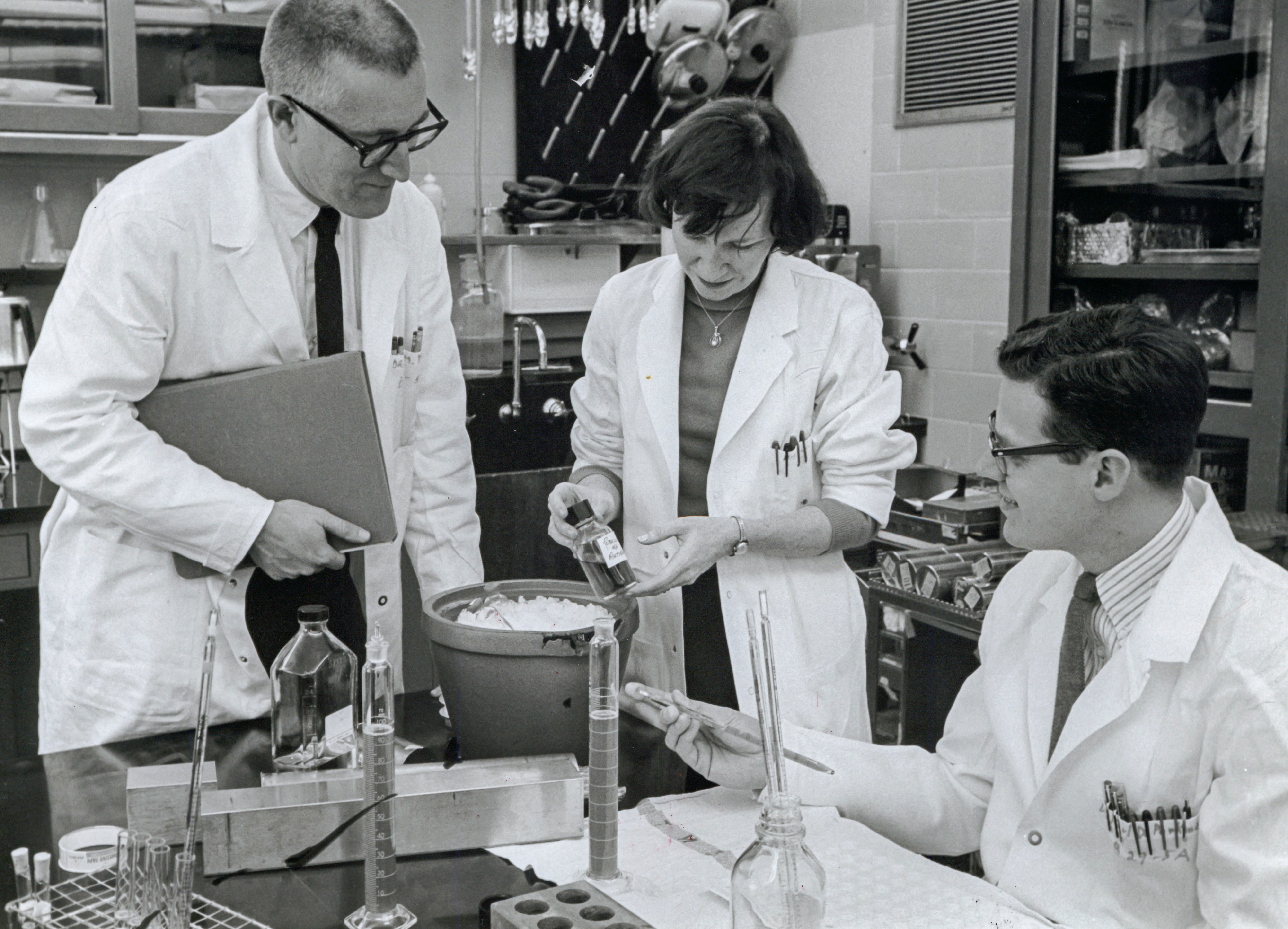Hope Hopps (1926-1988)
Hope Hopps grew up in Rhode Island and attended the University of Rhode Island. She later received a master’s in microbiology from University of Maryland in 1950, an era when few women pursued graduate studies in the sciences.
She worked as a bacteriologist at Garfield Memorial Hospital and then Walter Reed Army Institute of Research.
Hopps joined the National Institutes of Health (NIH) in 1956, first in the National Institute of Allergy and Infectious Diseases.
She joined the NIH Division of Biologics Standards (DBS) in 1960 in the Laboratory of Viral Immunology. Hopps worked with Drs. Parkman and Meyer on the Rubella vaccine and the patented Rubella antibody test.
Hopps authored or co-authored more than 89 articles, was awarded two patents (her second was for the BS-C-1 cell line that she developed), and was the national president of Graduate Women in Science. The BS-C-1 continuous cell line developed by Hopps was made from African green monkey kidney cells. The BS-C-1 is still used today and is suitable for propagating several viruses, including polio, measles, Rift Valley fever, respiratory syncytial, Coxsackie A9, O'Malley's A-1 agent, and simian agents 1, 4 and 5. Thanks to Hopps’ work, the BS-C-1 continuous cell line provides the virologist with another tool for diagnostic and research work and perhaps for the large scale cultivation of viral agents for vaccines.
Portrait of Hope Hopps Sigma Delta Epsilon records, #3605. Division of Rare and Manuscript Collections, Cornell University Library
Hopps worked in Building 29A, second floor beginning in 1967 when it opened, but likely worked in Building 29, second floor with the Laboratory of Viral Immunology before that.
Hopps also became an administrator after the administrative transfer of biologics from the NIH to the Food and Drug Administration (FDA) in 1972, first as the assistant to the Director of Biologics, then as acting Associate Director for Program Development & Operations, working in Building 29.
After retiring from government service, Hopps continued to work as a consultant and guest worker in the FDA’s Center for Drugs and Biologics (which would later be renamed the Center for Biologics Evaluation and Research [CBER], as it is still called today).
See also, “Finding Hope: A Woman’s Place Is In The Lab” Exhibition.
Dr. Meyer at left, Hopps at center, and Dr. Parkman at right with the rubella vaccine National Library of Medicine
Publications:
- “Biologic Characteristics of a Continuous Kidney Cell Line Derived from the African Green Monkey” by Hope E. Hopps, Barbara C. Bernheim, Ananda Nisalak, Joe Hin Tjio, and Joseph E. Smadel. Journal of Immunology (1963). https://www.jimmunol.org/content/91/3/416.
- “Changes in technology of vaccine research, development, and control” by John C. Petricciani, Harry M. Meyer, Jr., Paul D. Parkman, and Hope E. Hopps in Bulletin, World Health Organization (1977). https://www.ncbi.nlm.nih.gov/pmc/articles/PMC2367080/.
- “Comparison of the ultrastructure of several rickettsiae, ornithosis virus, and Mycoplasma in tissue culture” by D.R. Anderson, Hope E. Hopps, Michael F. Barile, and Barbara C. Bernheim in the Journal of Bacteriology (1965). https://www.ncbi.nlm.nih.gov/pmc/articles/PMC315827/.



